| |
|
|
| |
Tongariro drop-shot rig.
Fri 28th September, 2018
|
|
|
|
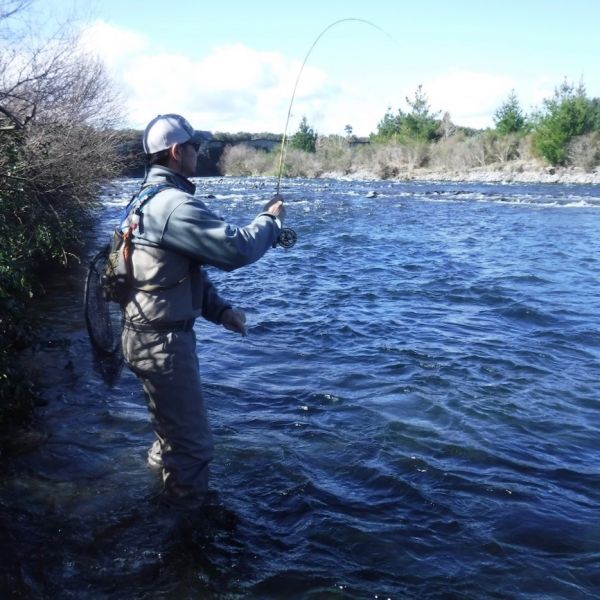
One of the biggest changes I've noticed on the Tongariro since I first started fishing it around twelve years ago is that anglers nowadays are far more likely to embrace modern techniques.
When I was first introduced to the river the methods most often used were nymphing with an indicator, wet-lining and at very specific times of the year dry fly. This was the way it had been done for years and you had some very funny looks from the "regulars" if you fished the river any other way.
It was also, a difficult and often intimidating river for beginners or visitors to master. Unless you could afford a guide or had an experienced buddy who was prepared to show you the ropes.
There have been many excellent books written over the years about the history of the river and how to fish it. But like any other sport, fly fishing is constantly evolving and its been the explosion of free information available on the internet that has helped change attitudes and kept anglers up to date with advances in techniques and equipment. You only have to visit You Tube to see what I mean.
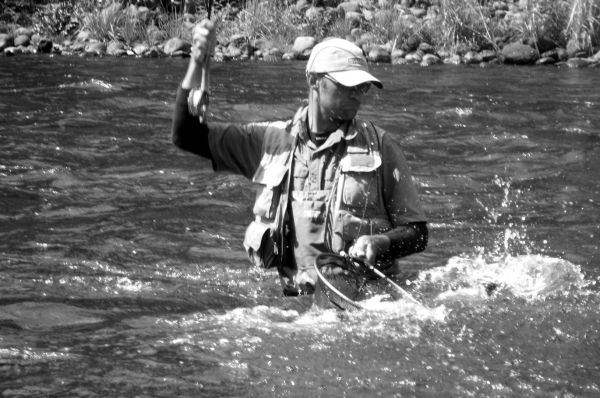
It was around ten years ago that I first noticed a group of overseas visitors on the river "Czech nymphing." And although I was familiar with the method in the UK you rarely saw it used on the Tongariro. But a few years later I was very lucky to fish part of the summer with Roman Heimlich and watching and fishing with him on the Tongariro re-kindled my interest in this hugely effective but highly addictive way of catching trout.
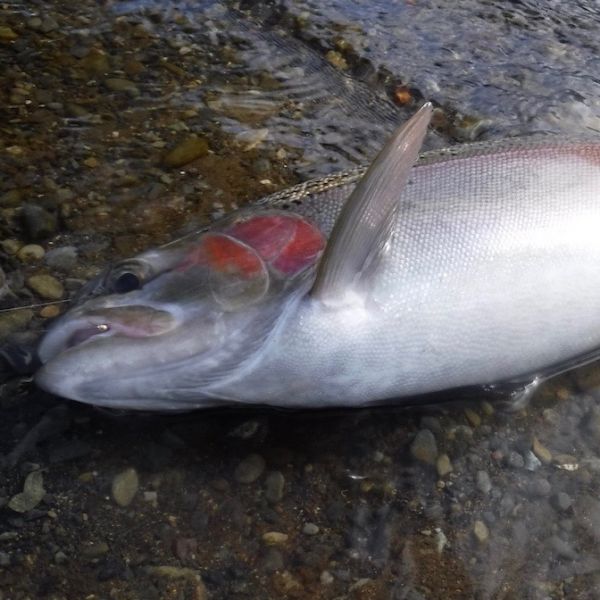 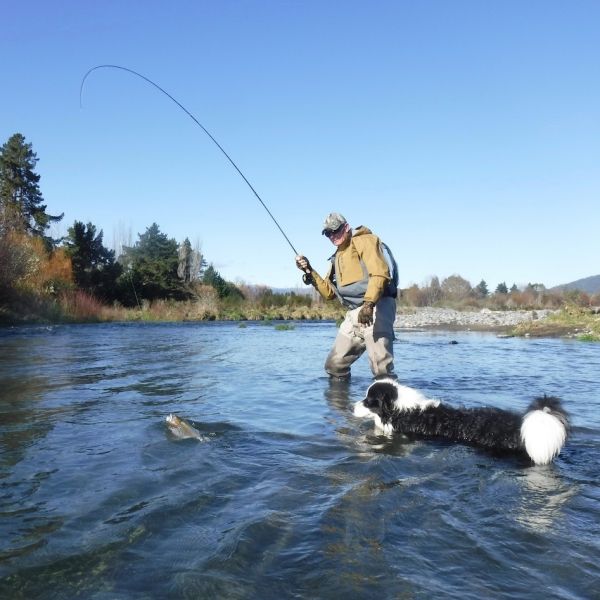
Since then, because its so much fun I find that I'm using it more and more on suitable stretches of the river and most of the fish I've caught this winter have been on this method.
Because I've spent some of that time in the very popular Braids anglers notice how effective it can be and curiosity often gets the better of them and they come over for a chat. I don't profess to be a Czech nymph expert...far from it. Like everything else in life I'm still learning. But I do know what works for me on the Tongariro and over the last few years I've been experimenting with different set-ups, flies and rigs and for the moment at least I'm happy with the results. Everyone has they're own way of doing things so there's nothing hard and fast.
But below are a few pointers which you may ... or may not find useful if you fancy having a go.
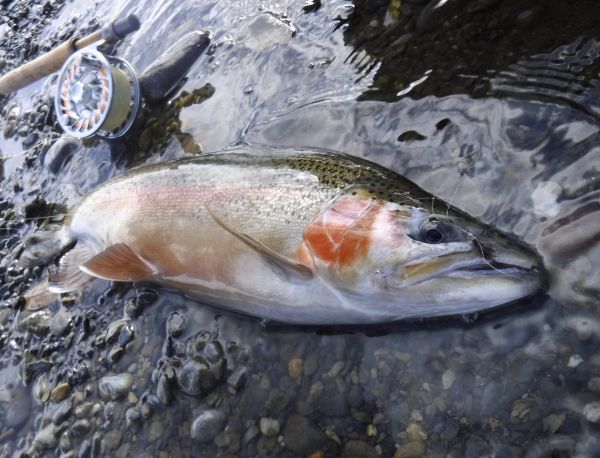
Ever since the 1984 competition between Poland and Czechoslovakia held on the Dunajec river in southern Poland the method now commonly called Czech nymphing has spawned a whole industry producing specialised equipment ... a far cry from the simplistic tackle used by the victorious Polish team back then. The story is well known so I won't repeat it again but if you haven't read about it before here's a link History of Czech Nymphing There's a wealth of information out there and I think by now the majority of anglers know that as far as Euro nymphing techniques are concerned most practitioners fish with longer rods ... usually between ten and eleven feet. More often than not these are rated anywhere from 2wt to 5wt. This extra length aids control and presentation during the drift and the softer action of these lighter rods also helps "cast" the heavy flies and protects the tippet while playing strong fish.
Its the leader set-up that most anglers seem curious about.
Again there's no right or wrong way... its very much a case of whatever works for you.

When I first started Czech nymphing there were no restrictions on leader length and providing you had a fly line on the reel ... that was acceptable. So most anglers keen to save a buck or two, loaded the reel with some backing and any old fly line they had lying around. To this they connected another fifteen meters or so of 20 Ib mono ... quite often blue Stren which stands out in most light conditions. To the Stren they attached what ever tippet arrangement they preferred, made up of much thinner line.
Nowadays there are much stricter rules governing leader length and the way they're constructed. Much of it stemming from competitive fly fishing. And over the last few years specialised Euro nymph lines have been developed. These are much thinner than conventional fly lines, often with no tapers.
There's no doubt when tight line nymphing a little further out {with shorter leaders} these specialised lines do help ... but they're not perfect.
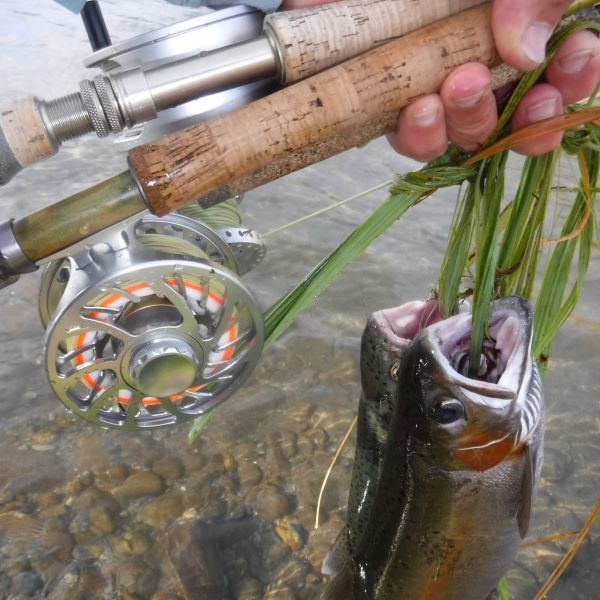 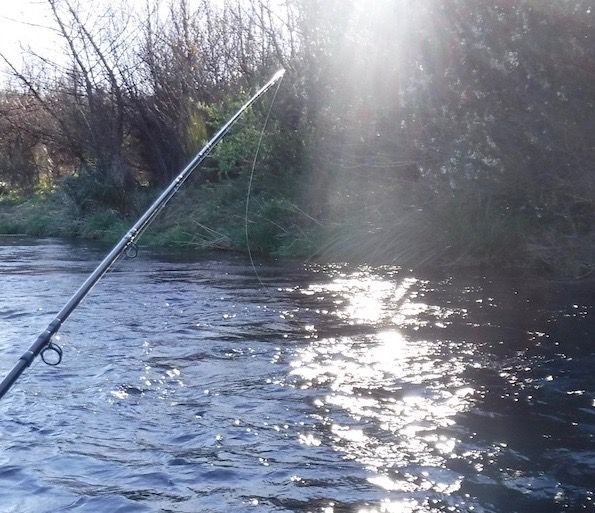
Because they're a much thinner, level fly line you get a lot less "line sag" during the drift.
And of course the adverse effects of wind is also reduced. From my own perspective I very rarely fish long distance with this method ...and by long distance I mean further than say twenty feet away. In fact most of the time its probably half that. So bearing in mind I use a leader with a total length of 18ft {including tippet} there's usually very little fly line outside the rod tip ... until I hook up. Which is when another of the advantages of using a "Euro nymphing specific line" kicks in. The thinner line is less prone to the effects of "drag" in strong currents. And combined with the softer rod, reduces the pressure on the hook hold and tippet when you're playing a fish. However despite all the pros there's a problem with them ... durabilty.
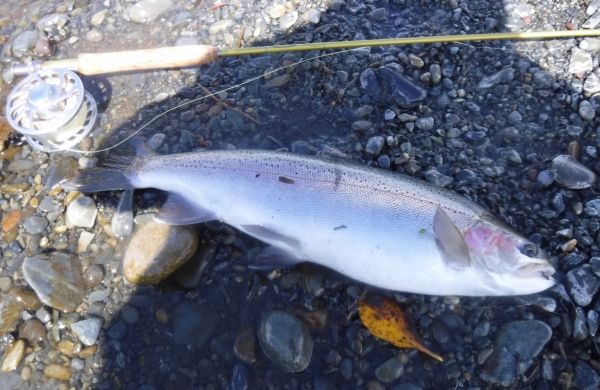 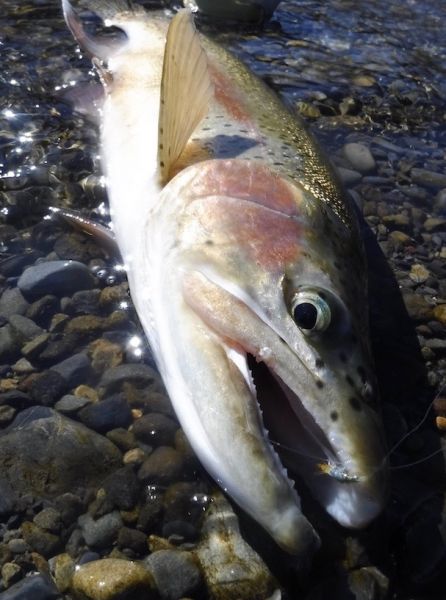
I've tried various Euro nymph fly lines but so far haven't found one that can withstand the rigours of fishing the Tongariro.
There are hundreds of videos on You Tube of anglers from other countries using them to great effect ... often "swinging" the fish into a landing net the size of a table tennis bat.
But even the "small trout" we take for granted here in New Zealand are a bit bigger and a little more demanding on tackle than some of their overseas cousins .And up to now every Euro nymph line I've tried has broken down after playing x amount of fish.
This usually manifests itself when you notice the thin outer coating peeling away from the core.
Of course because these are level lines you can extend their useable life by reversing the fly line. Then when that eventually breaks down {and it will} you can cut off the damaged section. Even if you really look after them by applying the line dressings that some manufacturers recommend they have a much shorter life-span than thicker conventional fly lines. And at a hundred bucks a pop they're not exactly "throw away" items.
Fed up with replacing them every few months I went back to the drawing board and tried something else. Surfing the net I came across some cheap lines that I usually wouldn't even consider. But at nine bucks ... which from memory included shipping ... all I had to lose was my "street cred".
So I ordered a 2wt DT line from China.
It would probably be a very unpleasant line to use if I actually had to cast it but for Czech nymphing its ok...just. After all its mainly there because the rules say I've got to have a fly line on the reel. It definitely isn't as nice to use as a purpose designed Euro line ...but it does the job. Next time I'll see if I can source a 1 wt and see how that goes.
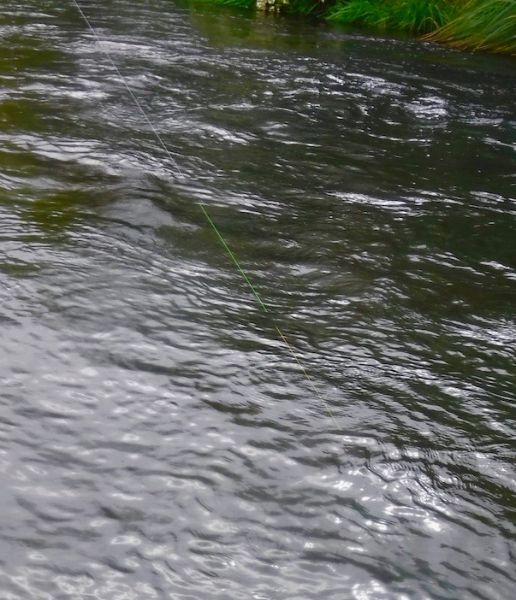 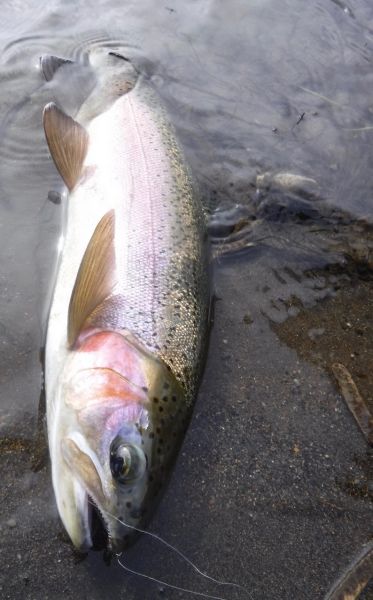
So...finally we get to the leader set up. I must stress again this is what works for me and the rig gets "tweaked" as I move around the river. So any measurements mentioned are only a rough guide. The only thing hard and fast is that the total length of the leader doesn't exceed that 18ft limit.
From the fly line I attach around ten feet of Rio True Test 17.6 lb mono. I'll go into more detail how I do this next time but you need to keep the knot as small as possible so that it runs through the rod guides easily. To the end of that I tie on a few feet of sighter material using the same knot. There are numerous brands on the market but the one I prefer is one that Grantly pulled off a bulk spool he had in the shop and I don't know who makes it. Anyway its a combination of fluoro orange, yellow and white. Each color separated by a thinner black band which really makes the colors "pop". Even my knackered eyes can pick it out no matter what conditions I fish in. To this I attach a tiny swivel .... but leave the tag end of the knot long to help with bite detection. This swivel reduces the effects of line and dropper twist and is something I build in to all my nymphing rigs.
Just to remind you again that all these measurements are approximate and the goal is to keep within that 18ft limit.
The next section of line varies in length depending on the depth of water in front of you. Ideally you need the tag end of the sighter to be visible just above the surface during the drift. So from the swivel I tie on an appropriate length of Vision 3X fluorocarbon which although only slightly thicker than other brands is a lot stronger. Its actually rated an impressive 7.7 lb for almost the same thickness. To the end of this I attach a micro ring. And from there I tie on around 14 inches of 7lb Airflo Sightfree fluoro {which also carries a 3X rating} and to the end of this another micro ring. Now I take roughly 8 inches of 5lb mono or fluoro it doesn't really matter and tie a one inch loop at one end and tie the other end onto the micro ring. I use the loop to carry the split shot when I'm "drop shotting". See image below.
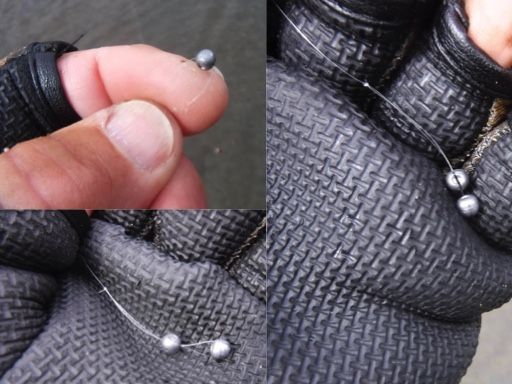 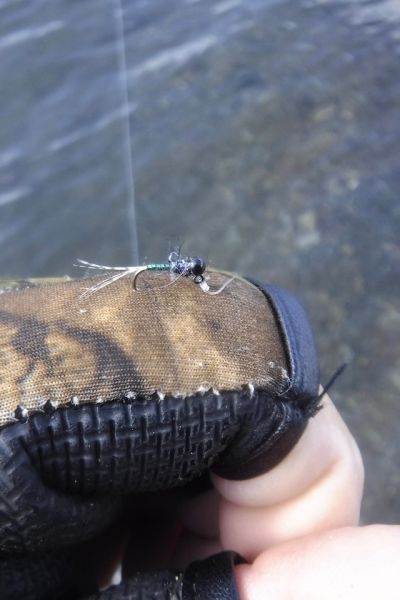 To both micro rings I tie on 4 inch droppers using Hanak 6lb fluoro ... another great line you can depend on. The reason I use micro rings to form my droppers and not the usual Triple Surgeons knot is personal preference. As I mentioned "what ever works for you". It takes a little longer to "build" the rig initially, but micro rings make it much easier to attach new droppers throughout the day. To both micro rings I tie on 4 inch droppers using Hanak 6lb fluoro ... another great line you can depend on. The reason I use micro rings to form my droppers and not the usual Triple Surgeons knot is personal preference. As I mentioned "what ever works for you". It takes a little longer to "build" the rig initially, but micro rings make it much easier to attach new droppers throughout the day.
And that's my Euro nymphing drop-shot rig.
You can of course dispense with the second micro ring and "split shot part" of the rig and fish bog standard heavy Czech nymphs. One on the point and another on the dropper ... as I often do. But with the drop shot rig you can use any pattern in your fly box that usually works for you when you're nymphing. And because the weight needed to "get down" is supplied by the shot ...not the flies ... you can fish much smaller patterns...which is particularly useful at times.
As a bonus because the split shot is carried on weaker line than the rest of the set up, if you snag up, you only lose a couple of BB's or whatever you happen to have on the end. In a previous surf-casting life we used to call this a "rotten bottom" which as far as my wife is concerned is still her pet name for me.
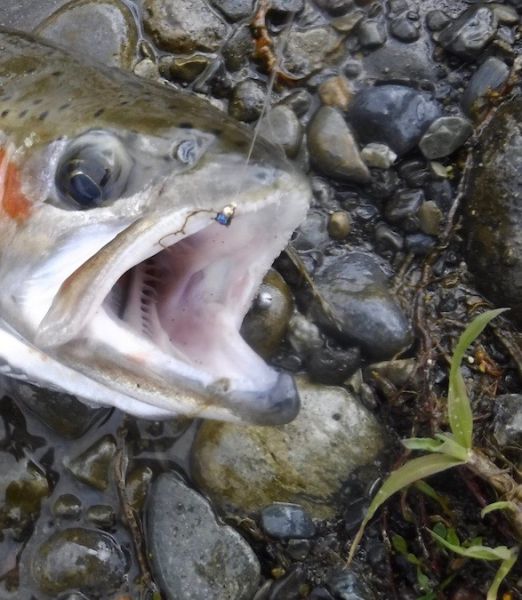
The picket lines at the Bridge Pools this week have shrunk with each passing day ... a sure sign we've seen the best of the runs. Spawning rainbows will still trickle through and on occasions in past years that "trickle" has turned into an unexpected torrent. At this time of year fish numbers in the river are usually at their peak and it'll continue this way for a little while yet. Not all of them will be gleaming fin perfect examples but you should be able to hook up something where ever you fish for the next couple of months.
The weather pundits don't seem to be able to make their minds up this week and the forecast alters every few hours. But at present its pleasantly warm with plenty of sunshine and light winds...a near perfect start for the school break.
The bach's are already filling up and I expect it to be another busy holiday as recreational visitors flock to the area. There'll be a lot more anglers chasing the fish so it'll be early starts and lots of walking for the next couple of weeks.
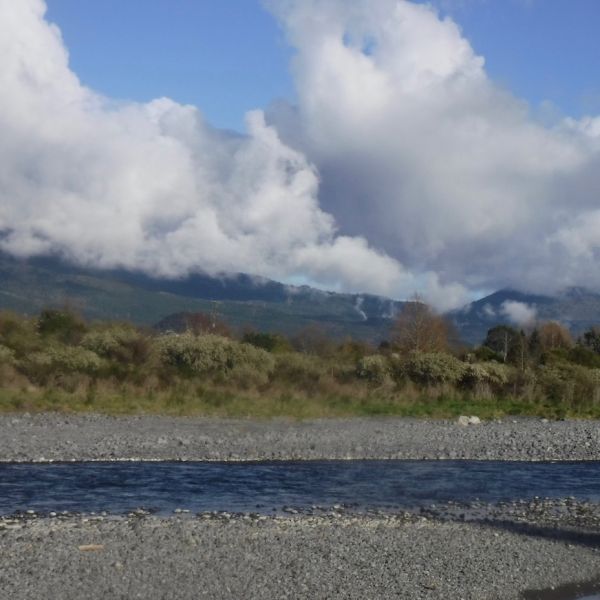
Have a great time guys
Tight lines
Mike |
|
|
| Back to Top |
|
|
|
|
|
|
|